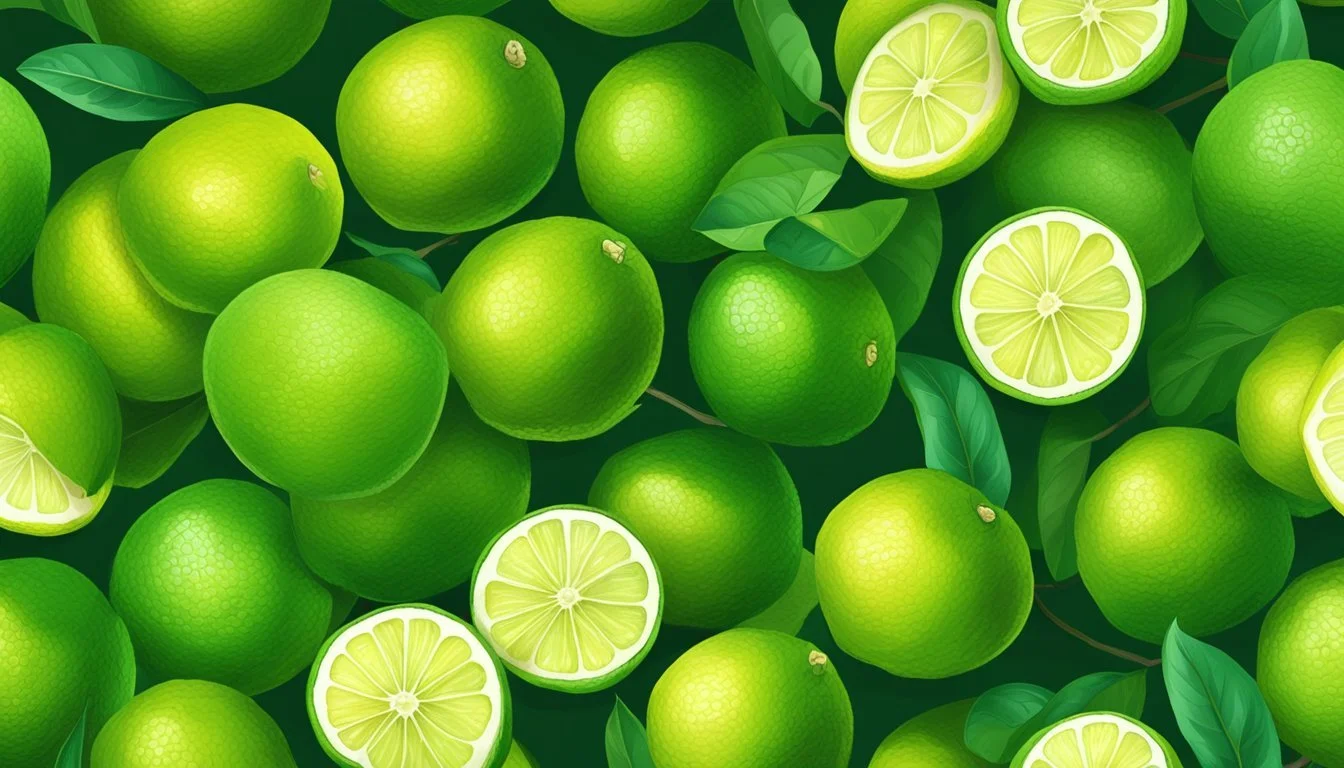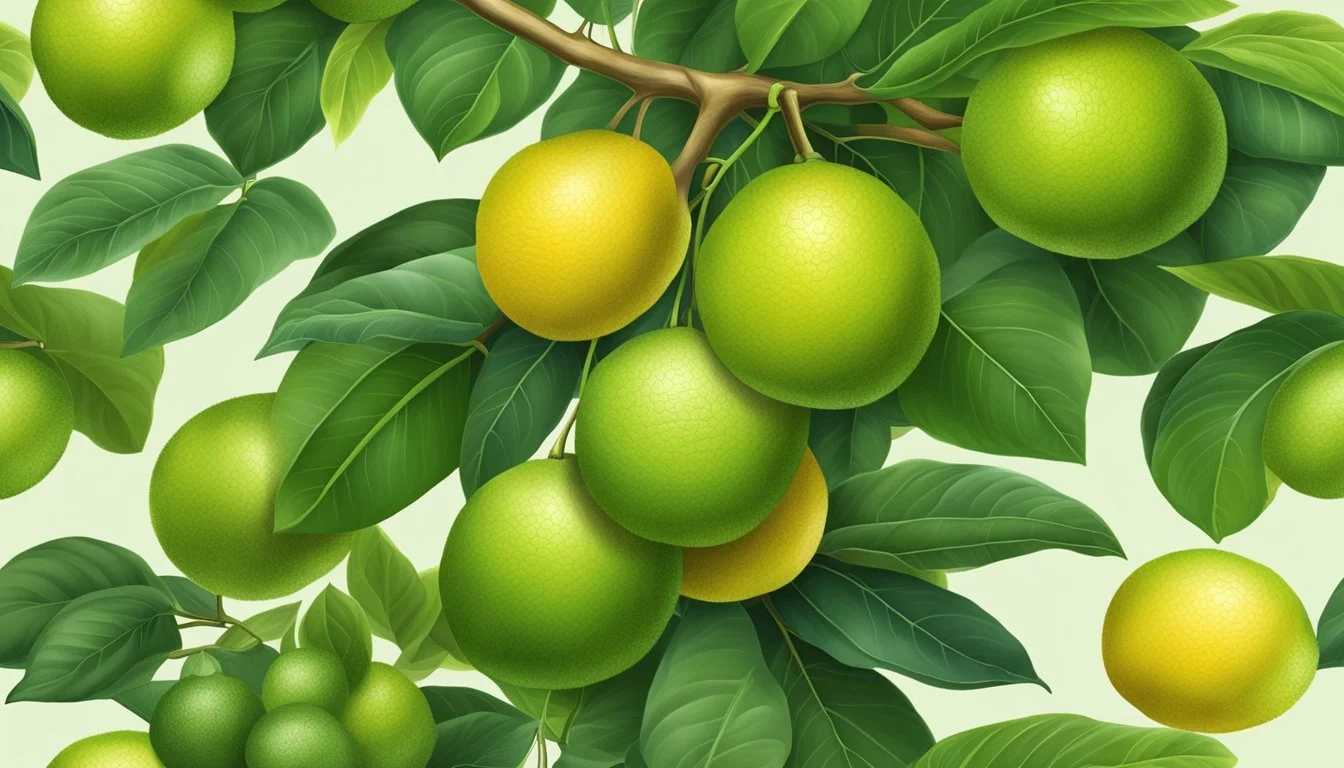How to Tell if a Persian Lime is Ripe
Determining Peak Freshness
Determining the ripeness of a Persian lime is crucial for both culinary and gardening success. Persian limes, also known as Tahiti limes, are a staple in many dishes and drinks, providing a burst of tangy, acidic flavor. While they are commonly found in stores year-round, those who grow them or prefer picking the freshest limes possible can use certain indicators to ensure they are harvesting the fruit at peak ripeness. The limes should feel slightly heavy for their size, indicating a good amount of juice, and their color should be a deep green, which often signifies maturity.
Physical cues play a significant role in identifying ripe Persian limes. A ripe lime will have a slight give when gently squeezed, signaling the juiciness inside, but it should not be too soft or mushy, as this can suggest overripeness. The skin should be smooth and free of any brown spots or blemishes. When it comes to picking limes from a tree, using proper tools like pruning shears can prevent damage to both the fruit and the tree, ensuring that the harvest is not only ripe but also undamaged for later use.
Key Takeaways
Ripe Persian limes feel heavy and have a deep green color.
A slight give under gentle pressure is an indicator of ripeness, while softness may imply overripeness.
Using the right tools for harvesting can protect the integrity of the fruit and the tree.
Identifying Ripe Persian Limes
Recognizing when a Persian lime is ripe is essential for enjoying their peak flavor. The key indicators of ripeness include the lime's color, texture, and size.
Color and Appearance
A Persian lime is considered ripe when it has a bright green color. Although some ripe limes may have a slight color change towards yellow, they should not be dismissed as they might still be ripe enough for picking. The lime's overall appearance should lack any brown or hard spots, which are often indicators of an overripe or damaged lime.
Texture and Firmness
The texture of a ripe Persian lime should be smooth without any wrinkles. Upon gently squeezing, a ripe lime will yield slightly under pressure but should not be too soft. Overripe limes often feel mushy, while underripe limes will feel more firm and less yielding.
Size and Weight
As a general rule, ripe Persian limes will feel heavy for their size, suggesting a juicy interior. There isn't a strict guideline on size since it can vary, but a heavier lime typically indicates that it holds more juice and is likely ripe. Limes that are too light for their size may not have developed fully and could lack flavor.
Optimal Harvesting Practices
Maximizing the quality of Persian limes hinges on understanding the best time to harvest and the proper harvesting techniques. Carefully timing the harvest and employing the right methods can ensure the limes reach their peak flavor and longevity.
Best Time to Harvest
Persian limes typically reach maturity and are best harvested in late fall to early winter. The optimal time for picking ripe limes from a lime tree is when they exhibit a bright green color and have attained a size of about 2 inches in diameter. They should feel firm but give slightly under pressure, indicating juiciness without being overly soft. The time of year greatly influences the harvesting time, as earlier months might yield less mature fruits, and waiting too long can cause overripening. Harvesting is ideally done in the morning when temperatures are cooler, which can reduce the stress on the tree and improve the shelf life of the fruit.
Harvesting Techniques
When it's time to pick limes, one should use pruning shears to clip the fruit from the tree. This method helps prevent damage to both the lime tree and the fruit, ensuring a harvest of unbruised, high-quality limes. It is important to cut the stem close to the fruit to avoid leaving a long stem, which could puncture other limes during storage and transport. After being picked, limes should be handled gently and stored promptly to maintain their freshness and prevent spoilage.
Storing and Ripening Persian Limes
Proper storage and ripening techniques are crucial for enjoying the full flavor of Persian limes. Whether unripe or ready for consumption, understanding the suitable conditions for ripening and the ideal storage methods ensures that the limes retain their zest and juiciness.
Counter-top Ripening
Persian limes typically ripen after they are picked. To ripen unripe limes, they should be left at room temperature, away from direct sunlight. The ripening process is facilitated by ethylene gas, which is naturally emitted by limes as they mature. For a faster ripening process, one can place unripe limes in a paper bag with other ethylene-producing fruits, like apples or bananas. The concentration of ethylene gas within the bag will help hasten ripening.
Room Temperature: Best for ripening unripe limes.
Paper Bag Trick: Encloses ethylene gas to speed up ripening. Place limes with other ethylene-producing fruits.
Refrigerated Storage
Once limes reach their peak ripeness, they should be stored in the refrigerator to prolong their freshness. The cooler temperature slows down the decay process, keeping the limes firm and juicy for a longer time.
Temperature: Store ripe limes in the refrigerator at a temperature between 38°F to 48°F (3°C to 9°C).
Prevention: Keep away from foods with strong odors as the limes can absorb them.
By adhering to these storage and ripening guidelines, one ensures that Persian limes maintain their desirable quality, from that first gentle squeeze at peak ripeness to their final culinary use.
Telling Unripe from Overripe
Discerning the ripeness of Persian limes requires attention to their physical characteristics. Differences in color, texture, and firmness are crucial in determining if they are unripe, ripe or overripe.
Signs of Unripeness
Unripe Persian limes typically exhibit a vibrant dark green color. They feel firm to the touch and do not yield much when squeezed, indicating low juice content. Persian limes usually lack fragrance when they are unripe, lacking the signature lime scent. The absence of a citrus smell is a common indicator of an unripe state.
Color: Vibrant dark green
Texture: Firm
Squeeze: Resistant
Smell: Absent or weak
Indicators of Being Overripe
Overripe Persian limes will have either a yellow hue or a pale green color. They may feel squishy when squeezed and might also have bruises or soft spots. An overpowering fragrance can indicate overripeness, as well as a too soft texture, suggesting the interior has started to degrade.
Color: Yellow or pale green
Texture: Squishy with possible bruises
Squeeze: Yields too easily
Smell: Strong, possibly fermented
Using Ripe Persian Limes
Ripe Persian limes, known for their zesty flavor and tangy taste, provide the optimal flavor when used at peak ripeness. They serve as a versatile ingredient in cooking and beverages and offer an array of health benefits due to their rich nutrient content.
In Cooking and Cocktails
Persian limes contribute bold tanginess to a variety of dishes and drinks. They are essential in achieving the zesty flavor in:
Cooking:
Dressings: Use fresh lime juice to create zesty vinaigrettes.
Marinades: Lime juice and zest can tenderize and add flavor to meats.
Seafood: Fresh lime pairs well with fish for a refreshing taste.
Cocktails:
Classic Margaritas: Lime juice is key for the signature tart flavor.
Mojitos: Muddle lime wedges to infuse the cocktail with a tangy taste.
Non-alcoholic beverages: Add a wedge to sparkling water for a zesty twist.
Limes are best used when freshly cut to preserve their peak tanginess.
Health and Nutritional Benefits
Consumption of ripe Persian limes provides nutritional value with benefits such as:
Vitamin C: Crucial for immunity support and skin health.
Blood Sugar: They may help in regulating blood sugar levels.
Antioxidants: These compounds help neutralize free radicals.
Nutrient: Vitamin C
Benefit: Supports the immune system
Nutrient: Antioxidants
Benefit: Protects cells from damage
Ripe Persian limes are more than just a culinary delight; they're a potent source of vitamins and antioxidants contributing to overall well-being.
Understanding Persian Limes
The Persian lime is a juicy, seedless citrus fruit renowned for its versatility and unique characteristics. As a staple in culinary applications, it differs from other lime varieties in several notable aspects.
Comparing with Other Varieties
Persian limes, also known as Tahiti limes, are distinct from their citrus relatives, especially the Key lime (also known as the Mexican lime). Listed below are contrasts that set Persian limes apart:
Size: Persian limes are generally larger than Key limes.
Color: When ripe, Persian limes have a deep green skin that may turn yellowish, unlike Key limes which are smaller and typically have a lighter green to yellow hue.
Flavor: Persian limes are less tart and have a milder flavor compared to the intense tartness of Key limes.
Seeds: Key limes often contain seeds, while Persian limes are commonly seedless.
These characteristics make Persian limes highly sought after for cooking and baking, as their less acidic taste and absence of seeds offer convenience and versatility.
Cultivation and Climate
Persian lime trees thrive in a climate conducive to citrus production - warm, subtropical to tropical regions are ideal. The optimal conditions for growing Persian limes include:
Temperature: A range that does not typically fall below freezing; young trees are particularly sensitive to cold.
Soil: Well-draining soil is crucial for preventing root diseases.
Sunlight: Full sun exposure is necessary for abundant fruit production.
Regions with such climates, like Mexico and Florida, are primary producers of Persian limes. The trees bloom and can produce fruit multiple times a year, making them a prolific component of the citrus industry.
Practical Tips for Lime Growers
Maximizing lime yield and ensuring the production of ripe fruits stems from diligent care and targeted techniques for promoting fruit ripening. Focus not just on the growth, but on the delicate balance required for high-quality production.
Caring for Lime Trees
Optimal Soil and Watering: Lime trees thrive in well-draining soil with a pH between 6.0 and 7.0. Ensure consistent watering to maintain soil moisture, particularly during dry periods, but avoid waterlogging as it can lead to root diseases.
Fertilization and Pruning: Fertilize lime trees regularly with a balanced NPK fertilizer to promote growth and lushness. Prune selectively to remove dead branches and allow sunlight to reach the inner sections of the tree, enhancing overall health and fruit quality.
Monitoring for Pests and Diseases: Vigilance in detecting pests and diseases like aphids or citrus canker early on is critical. Employ appropriate organic or chemical treatments as needed to protect yield.
Promoting Fruit Ripening
Assessing Ripeness: Ripe Persian limes will yield slightly to a gentle squeeze, indicating sufficient juice yield and oil content. They typically remain green and may only yellow when overripe—relying on color can be misleading.
Enhancing Ripening Conditions: To promote even ripening, maintain a consistent environment with adequate sunlight and protect the trees from extreme temperatures. If necessary, modify microclimate conditions using techniques like mulching to regulate soil temperature.




